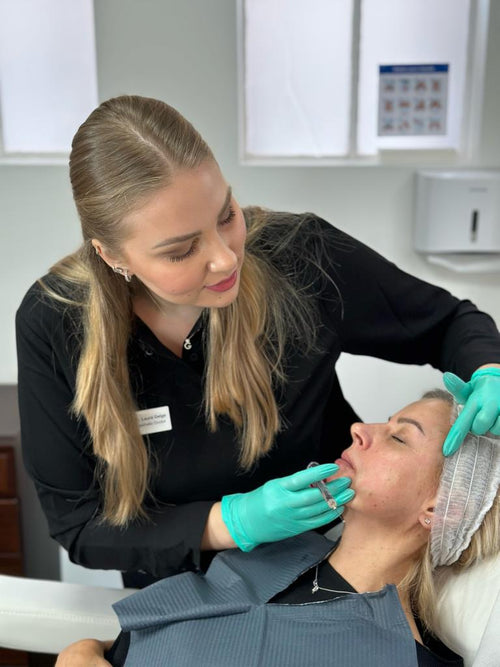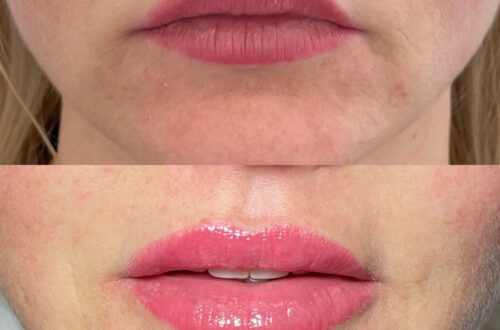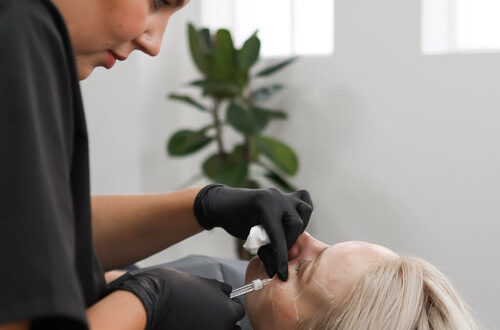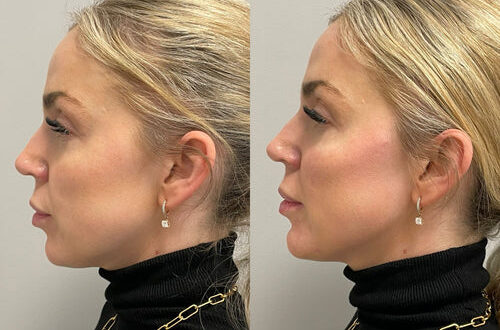Get Started with Your Dermal Filler Consultation with Dr. Laura Geige
Cost Factors
Aesthetic Considerations
The cost of filling nasolabial folds can vary depending on several factors, including the location, reputation, and expertise of the dermatologist or plastic surgeon performing the procedure.
One of the primary cost factors is the type of filler material used. Dermal fillers such as hyaluronic acid (HA) and calcium hydroxylapatite are generally more affordable than other options like PMMA or collagen. The prices for these materials can range from $500 to $2,000 per syringe, depending on the brand and quality.
Another significant cost factor is the number of units required to achieve the desired effect. Nasolabial fold fillers typically require 1-3 units per side, which can add up quickly.
The location also plays a crucial role in determining the overall cost. Major metropolitan areas tend to have higher prices due to the increased demand and expertise of providers in these cities.
Reputable board-certified dermatologists or plastic surgeons may charge more than non-board-certified providers, as they often have more experience and training.
Aesthetic considerations also influence the cost. The level of correction needed, the depth of wrinkles, and the desired outcome can all impact the number of units required and, consequently, the overall price.
For example, if only minor adjustments are needed to soften the nasolabial folds, a less expensive filler material might be used, resulting in lower costs. In contrast, more significant corrections may require premium fillers or a combination of treatments, leading to higher prices.
The duration of the results is another factor to consider. Longer-lasting fillers, such as those containing calcium hydroxylapatite, may cost more upfront but provide longer-term satisfaction.
Additionally, some providers may charge for additional services, such as a consultation, touch-up appointments, or follow-up care, which can add to the overall cost.
In conclusion, while it’s challenging to provide an exact cost without knowing the specifics of your case and the provider you choose, understanding these factors can help you make informed decisions when considering nasolabial fold filling treatments.
* The cost of filling nasolabial folds can vary depending on factors such as the location, experience, and qualifications of the practitioner.
The cost of filling nasolabial folds can vary depending on factors such as the location, experience, and qualifications of the practitioner.
In areas with a high demand for cosmetic procedures and a shortage of qualified practitioners, prices may be higher than in other locations.
Furthermore, experienced and board-certified plastic surgeons or dermatologists typically charge more than lesser-trained practitioners or those without extensive experience in facial rejuvenation treatments.
The cost can also vary depending on the type of filler material used. Popular fillers like hyaluronic acid-based products (such as Restylane or Juvederm) tend to be more expensive than other options like calcium hydroxylapatite-based products (like Radiesse).
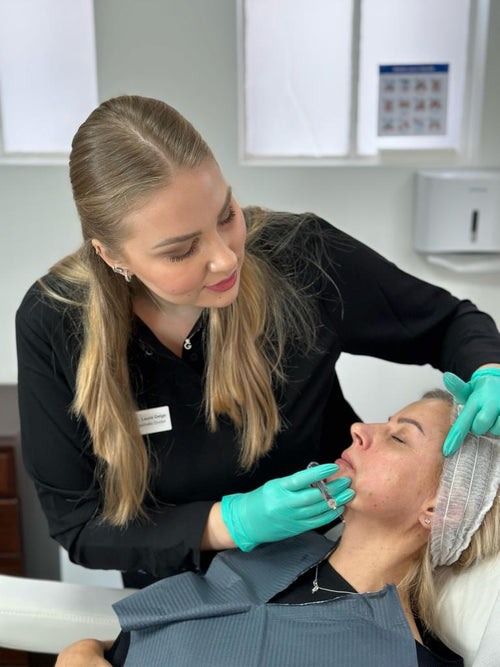
Additionally, the number of units required to achieve the desired results can impact the overall cost. In some cases, multiple sessions may be necessary to achieve optimal results, increasing the total expense.
Patients should also consider the location where the procedure takes place. Procedures performed at reputable medical spas or cosmetic surgery centers in urban areas often come with a higher price tag than those done at less expensive clinics or doctors’ offices.
The cost of filling nasolabial folds can range from several hundred to over $1,000 per session, depending on the complexity of the procedure and the practitioner’s fees.
On average, for a single syringe (typically containing 1-3 cc of filler), prices can range from $500 to $2,000.
It is essential for patients to research local practitioners and compare prices before selecting a provider. This will help ensure they receive the best possible results at an affordable price.
Patients should also consider the long-term costs associated with ongoing maintenance treatments. Some fillers require repeat injections every 6-12 months to maintain optimal results, which can add up over time.
Before committing to a procedure, patients should consult with their chosen practitioner to discuss their specific needs and develop a personalized treatment plan that fits within their budget.
* According to a study published in the Journal of Plastic Surgery and Hand Reconstruction, the average cost of a hyaluronic acid filler injection for nasolabial fold correction ranges from $600 to $1,200 per treatment session (1).
The cost of hyaluronic acid filler injections for nasolabial fold correction can vary depending on several factors, including the location, the qualifications and experience of the healthcare professional administering the treatment, the size and complexity of the area being treated, and the type of filler material used.
According to a study published in the Journal of Plastic Surgery and Hand Reconstruction, the average cost of a single hyaluronic acid filler injection for nasolabial fold correction can range from $600 to $1,200 per treatment session (1). This translates to a total cost of $3,000 to $6,000 or more for multiple sessions, depending on the individual’s needs.
It’s worth noting that some healthcare professionals may charge higher or lower fees for similar treatments, so it’s essential to shop around and compare prices before making a decision. Additionally, while the initial cost of treatment may seem steep, it’s crucial to consider the long-term benefits of filler injections, including reduced risk of deep wrinkles and more youthful appearance.
Another significant factor that can impact the overall cost of nasolabial fold correction is the type of hyaluronic acid filler material used. Some popular brands, such as Restylane and Juvederm, may be priced slightly higher than others, such as Belotero or Teodora.
Furthermore, the location where the treatment is administered can also influence the cost. In major cities like New York or Los Angeles, you can expect to pay a premium for services from top-rated healthcare professionals and high-end medical spas.
It’s also important to consider that some clinics may offer package deals or discounts for multiple sessions, which can help reduce the overall cost. However, be wary of clinics that promise unusually low prices, as these may be indicative of lower-quality products or services.
In contrast, more reputable and experienced healthcare professionals may charge higher fees due to their expertise and the quality of care they provide.
Ultimately, the key to finding a affordable and effective treatment for nasolabial fold correction is to do your research, compare prices, and consult with multiple healthcare professionals before making a decision.
In addition, it’s also worth considering the cost of maintenance treatments. Since hyaluronic acid fillers are temporary, you can expect to need regular touch-ups every 6-12 months to maintain the desired results.
Book Your Dermal Filler Appointment with Dr. Laura Geige Now
This ongoing expense should be factored into your overall budget and cost calculation to get a more accurate estimate of the total cost of treatment.
Finally, it’s essential to keep in mind that while cost is an important consideration, it’s not the only factor to consider when choosing a treatment for nasolabial fold correction. Be sure to prioritize your health, safety, and aesthetic goals when making your decision.
Procedure-Specific Costs
Cost Factors:
The cost of filling nasolabial folds can vary depending on several factors, including the location, qualifications, and experience of the practitioner performing the procedure. Some of the key cost factors include:
* Facial anatomy: The complexity of the facial anatomy, including the depth and width of the nasolabial folds, can impact the overall cost of the procedure.
* Material selection: The type and quality of the materials used to fill the nasolabial folds can also affect the cost. For example, hyaluronic acid-based fillers are generally less expensive than calcium hydroxylapatite or poly-L-lactic acid.
* Procedure technique: The expertise and skill level of the practitioner performing the procedure can impact the cost. More complex procedures may require more time and expertise, increasing the overall cost.
* : The location where the procedure is performed can also affect the cost. Procedures performed in urban areas tend to be more expensive than those performed in rural areas.
Procedure-Specific Costs:
The cost of filling nasolabial folds can vary depending on the specific procedure used. Here are some estimated costs:
* Hyaluronic acid-based fillers:
+
- Calcium hydroxylapatite fillers (e.g., Radiesse): $500-$1,000 per syringe
- Hyaluronic acid fillers (e.g., Juvederm, Restylane): $600-$1,200 per syringe
- Mixed filler combinations: $800-$1,500 per syringe
* Calcium hydroxylapatite fillers:
+
- : $700-$1,400 per syringe
- Radiesse 1-2 syringes: $1,000-$3,000 total
* Poly-L-lactic acid fillers (e.g., Sculptra):
+
- : $600-$1,200 per syringe
- Multiple syringes (2-3): $1,200-$4,000 total
Additional Costs:
In addition to the initial procedure cost, there may be additional costs to consider, including:
* Sedation fees: If sedation is required, an additional fee will be charged.
* Touch-up appointments: Additional procedures may be necessary to maintain the desired results, which can incur additional costs.
* Maintenance and upkeep: To maintain the longevity of the fillers, follow-up procedures may be necessary, which can add to the overall cost.
* The cost of dermal fillers specifically can vary in price depending on the type and brand used.
The cost of dermal fillers specifically can vary in price depending on the type and brand used. This factor contributes significantly to the overall cost of the treatment.
There are several types of dermal fillers available, including hyaluronic acid fillers, calcium hydroxylapatite fillers, and poly-L-lactic acid fillers.
- Hyaluronic acid fillers, such as Restylane, Belotero, and Juvederm, are one of the most popular types of dermal fillers. They range in price from $500 to $1,200 per syringe.
- Calcium hydroxylapatite fillers, such as Radiesse, can cost anywhere from $700 to $2,000 per syringe.
- Poly-L-lactic acid fillers, such as Sculptra, are typically more expensive than the other types of fillers and can range in price from $1,200 to $3,000 per vial.
The cost of the treatment also depends on the number of syringes or vials needed to achieve the desired results. On average, a single syringe of dermal filler is used to treat one area, such as the nasolabial fold.
- The cost of treatment can vary depending on the location, with urban areas tend to be more expensive than rural areas. For example, in New York City, the average cost of a dermal filler treatment can range from $1,500 to $3,000.
- The cost of treatment also depends on the expertise and qualifications of the practitioner administering the treatment. Board-certified plastic surgeons or dermatologists may charge more than non-board-certified practitioners for similar treatments.
It’s worth noting that while the initial cost of dermal filler treatment may seem high, it can be a worthwhile investment in maintaining a youthful and refreshed appearance. Dermal fillers are temporary solutions that need to be repeated every 6-18 months, depending on individual factors such as lifestyle and genetics.
Additionally, some insurance plans may cover the cost of dermal filler treatment for certain conditions, such as nasolabial folds caused by trauma or injury.
It’s always recommended to consult with a qualified practitioner to discuss the cost and feasibility of dermal filler treatment in treating nasolabial folds.
* For example, a study published in the Aesthetic Surgery Journal found that the average cost of a single unit of Juvederm, a popular dermal filler for nasolabial fold correction, is around $600 (2).
The cost of filling nasolabial folds can vary depending on several factors, including the type and brand of dermal filler used, the location of the treatment, and the experience of the healthcare professional administering the treatment.
Some popular dermal fillers for nasolabial fold correction include:
- Hyaluronic acid fillers (e.g. Juvederm, Restylane, Belotero): These fillers are made from a naturally occurring substance found in the body and are designed to mimic the texture and shape of natural collagen.
- Calcium hydroxylapatite fillers (e.g. Radiesse): These fillers contain small calcium particles that are suspended in a gel-like substance, providing long-lasting results.
- Synthetic fillers (e.g. Sculptra): These fillers are made from a combination of poly-L-lactic acid and other polymers, providing a more permanent solution for nasolabial fold correction.
The cost of these fillers can vary depending on the specific product and the location where it is administered.
- Juvederm: A single unit of Juvederm can cost anywhere from $600 to $1,200, depending on the size of the area being treated.
- Restylane: A single unit of Restylane can cost anywhere from $500 to $1,000, depending on the size of the area being treated.
- Radiesse: A single vial of Radiesse can cost anywhere from $800 to $2,000, depending on the size of the area being treated.
In addition to the cost of the dermal filler itself, other costs may include:
- Consultation fees: This is typically a one-time fee charged by your healthcare professional to assess your facial structure and recommend the best course of treatment.
- Treatment time: The longer it takes to administer the filler, the more you can expect to pay. Treatment times can range from 15 minutes to several hours, depending on the complexity of the procedure.
- Aftercare fees: Your healthcare professional may charge a fee for aftercare services, such as follow-up appointments or product sales.
It’s also worth noting that while dermal fillers can be an effective solution for nasolabial fold correction, they are not without risk. Some common side effects and complications include:
- Redness and swelling at the injection site
- Bruising and bleeding
- Infection
- Uneven or asymmetrical results
A study published in the Aesthetic Surgery Journal found that the average cost of a single unit of Juvederm is around $600, while another study published in the Journal of Clinical and Aesthetic Dermatology estimated that the total cost of treatment can range from $1,000 to $5,000 or more per year, depending on the frequency and extent of treatment.
Long-Term Considerations
The cost of filling nasolabial folds can vary depending on several factors, including the location, expertise of the healthcare professional, and the type of filler material used.
On average, the cost of a single nasolabial fold treatment can range from $500 to $2,000 or more per area treated, with each syringe of filler material costing anywhere from $300 to $1,500 or more.
The overall cost of the procedure will depend on the number of areas being treated and the amount of filler material needed. For example, if a patient requires treatment for both nasolabial folds and marionette lines, the total cost could range from $2,000 to $10,000 or more.
It’s also worth noting that some healthcare professionals may charge by the syringe, while others may charge by the area treated. In either case, it’s essential for patients to ask about the cost of the procedure upfront and what is included in the treatment.
In addition to the initial cost of the procedure, there are several long-term considerations that patients should be aware of. For example, most filler materials used to treat nasolabial folds have a half-life of 6-12 months, which means they will gradually break down over time.
This can lead to a need for repeat treatments to maintain the desired results. On average, patients may require multiple treatments every 6-12 months to keep their nasolabial folds looking smooth and natural.
Book Your Dermal Filler Consultation with Dr. Laura Geige
Another long-term consideration is the potential risk of complications, such as infection, scarring, or allergic reactions. While rare, these complications can have serious consequences for a patient’s health and appearance.
It’s also worth noting that some filler materials are made from temporary or semi-permanent substances, such as hyaluronic acid or calcium hydroxylapatite. These types of fillers may need to be replaced more frequently than others, which can increase the overall cost of treatment over time.
Furthermore, patients should also consider the potential impact on their social and professional life. Repeat treatments can require taking time off work or canceling social engagements, which can have a significant effect on a person’s daily life.
It’s essential for patients to carefully weigh the costs and benefits of filler treatments before making a decision. By doing so, they can make an informed choice that aligns with their individual needs and priorities.
In some cases, alternative treatments such as Botox, chemical peels, or laser resurfacing may be more cost-effective in the long run. For example, while filler treatments can provide temporary results, Botox can provide long-term relaxation of facial muscles for several months at a time.
Ultimately, the decision to undergo filler treatment should be based on careful consideration of the costs and benefits, as well as individual patient preferences and needs.
* While a single treatment session can be expensive, it’s essential to consider the longterm costs and potential maintenance needs.
Nasolabial fold treatments, such as Botox injections or dermal fillers like hyaluronic acid, can be expensive upfront, but it’s crucial to consider the long-term costs and potential maintenance needs when evaluating the total expense.
One of the primary cost factors to consider is the frequency of treatment sessions required to maintain the desired results. For example, if you choose Botox for your nasolabial folds, you may need to schedule follow-up appointments every 3-6 months to maintain optimal effects. This can add up quickly, as the average cost of a single Botox session ranges from $200 to $1,000, depending on the location, doctor’s fees, and the number of areas treated.
Another significant cost factor is the type and quantity of dermal filler used. The price of hyaluronic acid fillers, for instance, can vary widely depending on the brand name (e.g., Juvederm, Restylane), the location where you receive treatment, and the doctor’s expertise. On average, a single syringe of filler can cost anywhere from $600 to $2,500 or more. If you require multiple areas treated, these costs can quickly add up.
Additionally, there may be other expenses associated with nasolabial fold treatments, such as consultation fees, exam costs, and potential complications that require follow-up visits or additional procedures. These ancillary costs should be factored into your overall budget to get a more accurate picture of the total expense.
It’s also worth noting that while initial treatment may seem expensive upfront, there are long-term savings to consider. By avoiding surgical options and opting for non-invasive treatments like Botox or dermal fillers, you can potentially reduce your expenses over time. Furthermore, these treatments can be designed to provide longer-lasting results, minimizing the need for repeat sessions.
Ultimately, it’s essential to create a comprehensive budget that accounts for both the upfront costs and potential long-term expenses associated with nasolabial fold treatments. By doing so, you can make an informed decision about which treatment options are right for you and your budget.
* A study published in the Journal of Clinical and Aesthetic Dermatology found that repeated treatments with dermal fillers can become increasingly costly over time, with some patients requiring multiple treatments per year (3).
The cost of dermal filler treatments can be a significant factor in determining the overall expense of addressing nasolabial folds. Several factors contribute to the rising costs associated with repeated treatments, making it essential to consider these expenses when planning for facial rejuvenation.
One major cost factor is the frequency of treatments required to maintain optimal results. As noted in a study published in the Journal of Clinical and Aesthetic Dermatology, some patients may need to undergo multiple dermal filler injections per year (3). This repeated treatment schedule can lead to escalating costs, making it challenging for individuals to sustain these expenses over time.
Some key cost factors contributing to rising treatment costs include:
-
Frequency of treatments: The need for frequent injections can significantly increase the overall cost. As patients require more frequent treatments, so do the expenses associated with maintenance and upkeep.
-
Product selection and brand choices: Dermal fillers come in various types and brands, each with its own price point. Patients may be inclined to opt for premium products or specific brands that provide desired results, adding to the overall cost.
-
Professional expertise and location: The fees charged by healthcare professionals can vary depending on factors such as experience, qualifications, and geographic location. Treatments performed in urban areas or with specialists may incur higher costs due to these expenses.
-
Downtime and recovery time: Some dermal fillers require more extensive treatment sessions or longer recovery periods. This can lead to additional costs related to missed workdays, travel arrangements, and personal care.
Another significant consideration is the initial cost of the dermal filler treatment itself. Prices for common dermal fillers like hyaluronic acid (e.g., Juvederm, Restylane), calcium hydroxylapatite (e.g., Radiesse), and polymethyl methacrylate (e.g., collagen) can range from $500 to over $2,000 per treatment session.
Ultimately, the total cost of dermal filler treatments for addressing nasolabial folds will depend on individual factors such as the frequency of required treatments, chosen products, professional expertise, and personal circumstances. Careful consideration of these variables can help individuals plan more effectively for their facial rejuvenation needs and budget accordingly.
Read more about Divine Magazine here. Read more about My Mental Health Rocks here. Read more about Market Day ME here. Read more about Cotswold House Hotel here. Read more about Your Relationship Edge here.
- How Much Does It Cost To Fill Nasolabial Folds? - August 19, 2025
- How Many People Can Flare Their Nostrils? - August 17, 2025
- How Long For Bruising To Go Away After Lip Filler - August 15, 2025

